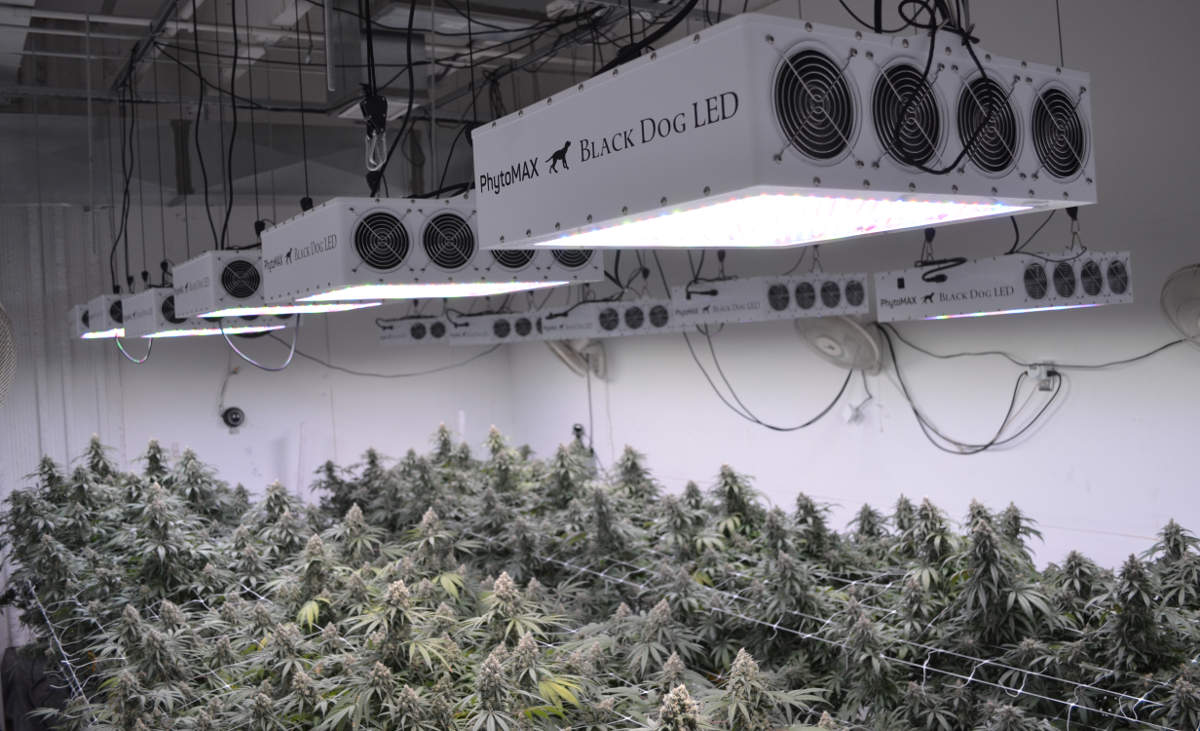Based in the U.S., Black Dog LED was founded in early 2010. The company focuses on indoor gardening, has various serious of LED grow lights, and is continuing its research in latest plant grow lighting technology. LEDinside recently had the honor to interview Black Dog LED’s CEO Noah Miller, to get a deeper insight of the product development and market potential of horticultural LED lighting.
LED light has obvious advantages in gardening compared to HID
Talking about the advantages of LED grow light, Miller gave us an example of LED VS. HID light cost comparison in gardening. Black Dog LED compared an HID-lit garden that used two 1000w Metal Halide (MH) bulbs for vegetative growth and two 1000w High Pressure Sodium (HPS) bulbs for flowering versus a garden lit with two Black Dog LED Platinum XL lights, and studied two scenarios: “optimal” and “economical”.

From the experiment, it can be seen that LED lights are less expensive at 12 months in the optimal bulb replacement scenario and 18 months in the economical bulb replacement scenario. After this time, consumers are spending less money each day they garden with LED lights. Also, with LEDs, toxic mercury will not be added to the landfills when changing bulbs, as is the case with all HID and fluorescent bulbs. “The short answer is that using LED lights becomes less expensive, quickly,” said Miller.
Development of cannabis growing market in the U.S. boost LED horticultural lighting demand
In terms of cannabis growing, North American market is the major pharmaceutical market and recreational cannabis also became legal, which boost consumption and supply of cannabis in the U.S. When growing cannabis, wavelength, luminous intensity and daylight length all have essential impact on the plant’s quality.
For instance, the plant needs more blue light in its growth stage while more red light in flowering stage. Blue wavelength possesses more energy. However, red light wavelength is longer but its energy output is relatively less. As for luminous intensity, high-intensity light contributes to higher production capacity of growing cannabis. During cultivation, weak light can restrain the germination of axillary bud and reduce tip growth of the branches, which help improve fiber output and quality.
According to Noah, Black Dog LED recently developed a new lighting spectrum called Phyto-Genesis Spectrum. It combines multiple LEDs with discrete spectra to help indoor growers cultivate high-yielding plants. The spectrum includes ultraviolet (UV) and far-red/near-infrared (IR/NIR) for optimizing photosynthesis and the creation of secondary metabolites. They have found that the LEDs waste less light than HID as well as other LED lights, which causes the temperatures on leaf surfaces to remain lower, thus enabling a more energy efficient operation because less cooling is needed.
A commercial cannabis grower in the Denver metropolitan area performed a test grow pitting Black Dog’s PhytoMAX 800 LED grow lights against 1000W single-ended and double-ended HPS. The results are astonishing:

Black Dog’s PhytoMAX 800 LED grow lights
• 25.5% increase in total yield - more than 60% higher grams per watt - compared to single-ended 1000W HPS
• 14.6% increase in total yield - 26% higher grams per watt - compared to double-ended (DE) 1000W HPS
• An increased harvest value of up to $1,200 per PhytoMAX light every flowering cycle
• All while still saving power and cooling costs compared to HPS
The greatest take-away from this commercial grow light case study was the identification of substantial increases for operation's profitability. Being more reliable and efficient, LED grow light is becoming more and more popular in the medical and recreational cannabis industry.
“We are pushing the limits of what is currently known about using artificial light to grow plants. Some of the research we are doing in BDL Labs, our research and development department, is being conducted for the first time ever.” Miller noted, adding that, “We are creating lights that, because of their combination of spectrum and power, are better for growing plants than anything produced before.”
Author Terri / LEDinside





 CN
TW
EN
CN
TW
EN







